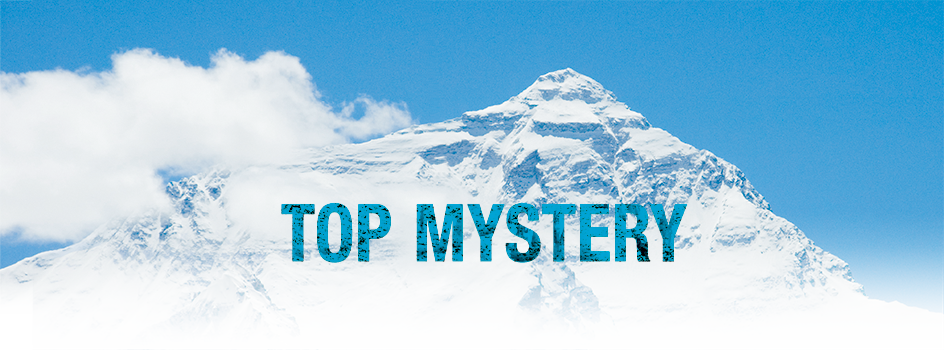

The first of May is the Labour Day holiday in many countries, but on this day in 1999, it was no time to rest for American mountaineer Conrad Anker and his team. They were examining a frozen body at nearly 27,000 feet on the North Face of Everest. Unlike other climbers, the group was in no hurry to reach the summit. They climbed up high for a completely different reason—to investigate the disappearance of the renowned mountaineer George Leigh Mallory and his young companion Andrew Comyn Irvine during an attempted summit of Everest 75 years earlier.
Athletic, charismatic and impossibly handsome, Mallory was the most illustrious British climber of his generation. His abilities on the mountain were legendary. Geoffrey Winthrop Young, a very experienced alpine climber, once mentioned that Mallory’s unique movements were “as sure-footed and as agile as the proverbial chamois”. Indeed, his climbing prowess was so extraordinary that many people perceived him as infallible. Near the end of his mountaineering days, Mallory was torn between his love for his wife Ruth and his obsession with scaling Everest—“the wildest dream”, as he called it. He was the only person on all three British expeditions to Everest, the “Third Pole”, in the 1920s. In the 1921 reconnaissance expedition, Mallory identified a potential route to the summit. Returning with the goal of reaching the mountaintop, the 1922 expedition team ended on the third try when an avalanche killed seven Sherpa porters. Despite the near-death experience, Mallory returned to the mountain in 1924 for one final attempt before settling down with Ruth and their three young children.
On 8 June 1924, Mallory set off early from a high camp at 26,800 feet with the 22-year-old Irvine. Dressed in gabardine jackets and hobnailed boots, they began making the final push to the highest point on Earth which lay a mere 2,200 feet above them. At 12:50 pm, Noel Odell, the geologist of the expedition team, was collecting fossils on his way to the camp. Looking up, he saw the clouds parting, with the whole summit ridge and final peak of Everest in clear sight. On the ridge within 800 feet of the summit were two tiny black spots scaling the rock formation and, in Odell’s words, “moving with considerable alacrity”. However, clouds quickly rolled in again and a snow squall blew up. It was the last time the climbing duo were seen alive.
Over the years, the final hours of Mallory and Irvine have stirred much curiosity and conjecture. Did they fall into a crevasse, succumb to the bitter cold or die from exhaustion? Did they meet their demise on the way up or on the way down? Most intriguingly of all, did they reach the summit, almost three decades before the first recorded successful ascent of the mountain by Edmund Hillary and Tenzing Norgay in 1953?
To solve this mystery, Anker and his companions set off to locate Irvine’s remains based on clues gathered over the years. It was hoped that the pair’s camera might be found on his body. The film, if undamaged, could possibly be developed and help answer some of the questions swirling around Mallory and Irvine’s fateful expedition. To their astonishment, the body they found on the North Face was Mallory’s. It was in a position of self-arrest with a broken right leg, apparently the result of a fall. Many of his belongings were recovered, including a pair of sun goggles deep inside a clothing pocket. This discovery seems to suggest that Mallory, after being last sighted by Odell, was on the move at least until nightfall. If true, he should have had enough time to reach the top. The fall that resulted in his death would likely have happened after dark when he was on his descent back to the camp. Adding to the speculation was the absence of Ruth’s photograph among his artefacts. As told by his family, Mallory had promised to leave Ruth’s picture on the summit. Did he manage to make the ultimate tribute to his wife before death?
Unfortunately, the camera was not found on Mallory’s body and so we will never know with certainty whether the pair had made it to the top of the mountain. Yet their legacy inspires us to ponder an even greater mystery of human nature—the motivation behind our willingness to seek out danger. What led Mallory, Irvine, and many others to risk their lives in pursuit of the summit? If his famous quip “Because it’s there” seems too flippant a response to the question, a more heartfelt answer might lie in what Mallory wrote after he climbed Mont Blanc in 1911:
Have we vanquished an enemy? None but ourselves. Have we gained success? That word means nothing here. Have we won a kingdom? No … and yes. We have achieved an ultimate satisfaction … fulfilled a destiny.
Is Mallory’s life a cautionary tale of conquering the unconquerable, or a beacon of light that illuminates the path to a well-lived life? Perhaps, in pursuing our interests with passion and vigour, the action is the reward itself.
〈謎格舉隅〉參考答案:命
“冕旒”指古代帝王的禮帽,是天子的代稱。
“命”字可分拆為“人、一、叩”,倒讀即為“叩一人”,扣合謎面萬國使臣跪拜天子的意思。










